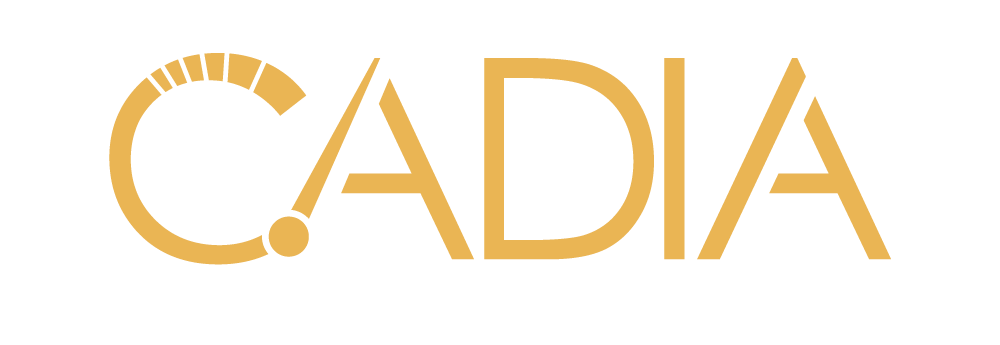The Merit Myth: Why Removing Barriers Actually Strengthens Performance

There's a persistent myth in business: that merit and inclusion are opposing forces. That if we focus on fairness and opportunity for all, we somehow compromise excellence.
I've heard versions of this concern hundreds of times over three decades in automotive manufacturing: "We just want the best person for the job." As if creating pathways for overlooked talent somehow conflicts with that goal.
Here's what 30 years on plant floors taught me: The opposite is true.
Removing barriers doesn't lower standards. It reveals talent you've been missing all along.
The Problem Hiding in Plain Sight
Picture a manufacturing plant facing a quality issue. Defects are slipping through. The immediate response? Blame the operators. Not skilled enough. Not paying attention. Not the right people for the job.
But what if the real problem is that the best problem-solvers on the floor haven't been asked for input?
What if your most capable employees have stopped speaking up because they've learned their ideas get dismissed? What if talent is hiding in plain sight because your systems—not your people—are the barrier?
This isn't hypothetical. Across the automotive industry, we're seeing a clear pattern: organizations that remove barriers to contribution, voice, and advancement consistently outperform those that don't. Not because they've lowered the bar. Because they've finally let their best people clear it.
What "Merit" Actually Means
Let's be honest about how most organizations define merit:
- Someone with the right connections who learns about opportunities before they're posted
- Candidates who "fit the culture"—which often means familiar backgrounds and communication styles
- Employees who advance through informal networks and golf course relationships
- People who look and sound like those already in leadership
None of that is merit. That's bias dressed up in business casual.
Real merit means: Who can solve the problem? Who delivers results? Who makes the team stronger? Who catches the defect before it reaches the customer?
When you remove barriers—when you ensure everyone has access to opportunity, information, and advancement pathways based on contribution—you get actual merit-based outcomes.
The Manufacturing Floor Knows This
Here's what I learned as a tool and die apprentice that shaped everything I believe about performance:
The best ideas about process improvement came from the people doing the work daily. Not always from the engineers. Not always from management. From the operators who understood the subtle patterns, caught the early warning signs, knew which shortcuts created quality issues.
But those ideas only surfaced in environments where people felt safe speaking up. Where their contributions were valued. Where advancement wasn't reserved for those with the right last name or the right connections.
In plants with strong psychological safety—where all employees felt their voice mattered—we caught defects earlier, solved problems faster, and built better products. Not because we lowered standards. Because we accessed the full capability of our workforce.
That's not social justice. That's operational excellence.
The Competitive Advantage You're Missing
Right now, across the automotive industry, a critical shift is happening.
Some organizations are retreating from inclusive talent strategies, worried about political backlash or regulatory uncertainty. They're narrowing their talent pools, reverting to "proven" approaches (read: defaulting to familiar networks), and playing it safe.
Others are getting strategic. They're removing barriers while maintaining rigorous standards. They're expanding talent pipelines without lowering the bar. They're positioning merit-based advancement—for everyone—as competitive advantage.
Guess which ones will win the talent war?
The automotive industry faces a looming labor shortage. We're competing for skilled talent across manufacturing, engineering, technology, and leadership. The organizations that master merit-based systems—where the best people rise regardless of background—will dominate.
Those who retreat to comfortable but limited talent pools will struggle.
What This Actually Looks Like
Strategic merit-based talent development isn't complicated. It's about removing the barriers that prevent your best people from contributing fully:
Barrier: Opportunities shared through informal networks
Solution: Transparent posting and clear pathways to advancement
Barrier: "Culture fit" screening that favors familiar backgrounds
Solution: "Culture add" mindset focused on diverse perspectives and problem-solving approaches
Barrier: Single referral sources dominating hiring pipelines Solution: Multiple sourcing strategies that expand talent pools while maintaining standards
Barrier: Leadership development limited to high-potential programs with subjective selection
Solution: Clear competency frameworks with objective assessment available to all employees
Barrier: Performance evaluation based on "leadership presence" (translation: looks and sounds like current leaders)
Solution: Results-based evaluation tied to contribution, problem-solving, and team impact
Notice what's consistent across these solutions:
- Higher standards, not lower ones.
- Broader talent pools, not narrower ones.
- Merit-based outcomes, not politics-based outcomes.
The Business Case Is Clear
What we're seeing from organizations that get this right:
Improved Retention: When employees see advancement based on contribution rather than connections, they stay. Saving 1-1.5x salary replacement costs per employee retained.
Enhanced Innovation: Diverse perspectives catch blind spots, challenge assumptions, and solve problems others miss. That's not theory—that's why the best product development teams are diverse.
Stronger Customer Connection: Our customer base is diverse. Teams that reflect that diversity better understand market needs, design preferences, and buying decisions.
Operational Excellence: Psychological safety—knowing your voice matters—drives quality improvements, safety gains, and process innovations. The data is overwhelming.
Competitive Positioning: While others retreat, organizations committed to merit-based advancement are accessing talent competitors overlook.
The Path Forward
This moment calls for strategic clarity, not retreat.
Organizations navigating current uncertainties while maintaining commitment to merit-based talent development will outperform those who abandon effective systems.
The key is strategic positioning: Focus on how programs function (expanding opportunity, removing barriers, advancing merit) rather than what they're called.
Continue work that delivers results:
- Transparent advancement pathways
- Expanded talent pipelines
- Objective performance systems
- Inclusive team environments where everyone contributes
These aren't political positions. They're operational imperatives.
Your Choice
The question isn't whether you support inclusion or merit. That's a false choice.
The real question: Will you remove barriers so your best talent—across all backgrounds—can rise? Or will you maintain systems that allow capable people to be overlooked because they don't fit familiar patterns?
One path strengthens performance. The other leaves competitive advantage on the table.
Talent exists in every community. Opportunities do not.
Organizations that master merit-based systems—where barriers are removed and excellence is rewarded regardless of background—will win.
Ready to explore what merit-based talent development looks like for your organization? Let's talk. Connect with CADIA to join peers navigating this strategic evolution. No sales pitch—just practical conversation about what's working across the industry.
Article exclusively written for cadia.org
Authored by Cheryl Thompson with AI assist
